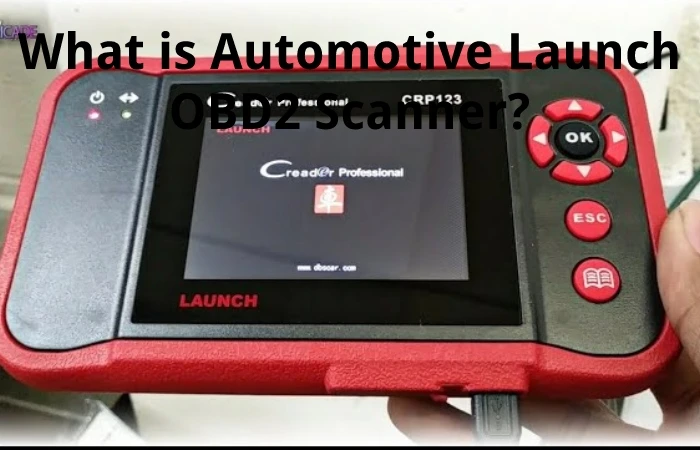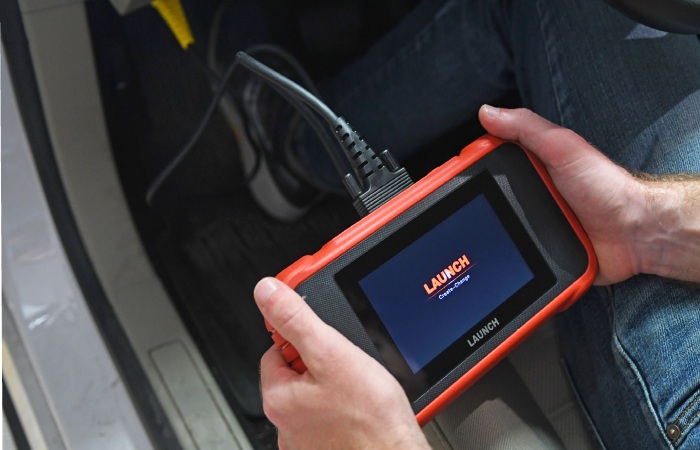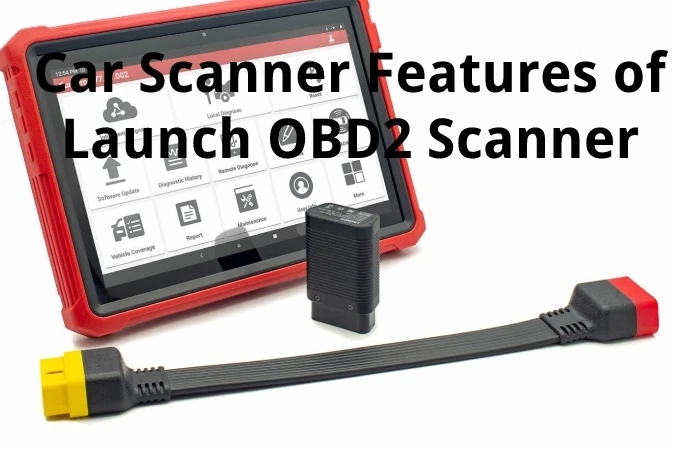Table of Contents
What Is an OBD2 Scanner for Automotive Launch?

An Overview of a Car The automotive industry uses OBD2 scanners as diagnostic tools to access and extract data from an automobile’s onboard computer system. On-Board Diagnostics 2, or OBD2, is a standard feature of the majority of cars manufactured after 1996.
A well-known manufacturer of OBD2 scanners and diagnostic instruments is Launch. With the help of Launch OBD2 scanners, auto repair professionals, mechanics, and car owners can carry out a variety of diagnostic procedures on a vehicle and obtain vital information about its operation and any problems.
The Automotive Launch OBD2 Scanner’s Features
Diagnostic Trouble Codes (DTCs) are stored by the vehicle’s computer system and can be read and displayed by a scanner. DTCs are specific codes that indicate an issue or malfunction with the vehicle. The scanner displays real-time data from the numerous sensors and sections of the car. It includes information on the coolant temperature, engine RPM, oxygen sensor readings, and fuel system health.
DTCs can be reset or cleared by the scanner following a maintenance or repair operation. It assists in turning off the “Check Engine” light and confirms that the problem has been fixed.
Certain Launch OBD2 scanners have advanced diagnostic features that enable users to access more systems and perform more in-depth troubleshooting. These characteristics include the gearbox, SRS (Supplemental Restraint System), ABS (Anti-lock Braking System), and other specific components.
The scanner can extract basic vehicle data, such as calibration IDs, VINs (vehicle identifying numbers), and other manufacturer-specific data.
Types of Automotive Launch OBD2 Scanner

A few years ago, talking about an automotive scanner was exclusive to some privileged dealers and workshops. Today things have changed with access to information; there are so many options on the market and all within reach of different pockets. We find models for laptops, PCs, mobile devices, tablets, and even cell phone applications. Now that the connection protocol to the car’s computer has changed, we find WIFI, Bluetooth, or USB connections.
You can also find numerous types of automotive scanners and software (on the web, they can be found for free) applicable under equipment such as PC, laptops, Android devices, and iPhones that can communicate under an interface protocol (EML-327) either by Bluetooth, WIFI or USB, and 16-pin connector.
Which is the Best?
To know the best one that suits your needs, you must first consider which cars will be serviced to acquire. Many articles recommend those who multitask and can read both OBD2 codes and perform throttle body reprogramming, live data, etc.
Here are the most common types of car scanners:
The beginning of the ODB1 system (On Board Diagnostic Generation One) was in 1998 with the creation of the on-board diagnostic system to correct engine gas emissions imposed by the United States government on the leading car manufacturers. Then the ODB2 protocol was created, and it was necessary to use the automotive scanner to diagnose the vehicle.
Specific Brands
It is supposed to be one of the most complete and dedicated exclusively to a specific brand, for which it is considered to be the original, so it comes directly from the brand’s supplier, so you can review sensor tests in real time and actions that are not possible on a multi-brand device. Among them, we find the VCM of the Chevrolet, the IDS of the Ford, the Tec stream of the Toyota, etc.
Multiband
They are the best sellers and are considered universal because they can be connected to different makes and models of vehicles that support ODB2. They generally feature brand-specific scanner features like real-time engine data logging and scanning, clearing check engine lights, and more. Among the best known we have: are Automotive Scanner G-Scan, AUTEL, BOSCH, LAUNCH, etc.
Diagnostic by Automotive Launch OBD2 Scanner
In addition to identifying errors that the vehicle’s computer may store and correcting them, automotive scanners perform other functions that make them more attractive. The most important are programming and adaptation. Another peculiarity of these devices is that a reading program allows knowing the status of the oxygen sensor and the battery voltage, showing the engine speed, making fuel adjustments, and checking the ABS brake cables, among others.
Car Scanner Features of Launch OBD2 Scanner

Everything ends on the scope of the pocket when buying a new device, and any model you select will have to have the following features:
- Show you the characteristics of the scanner and its version.
- Read the error codes and description of the stored errors, and delete the possible stored errors and the other diagnostic information data.
- Carry out service tests such as turning on the fuel cell, checking the ABS cables, oxygen sensor, battery voltage, engine speed display, fuel adjustment, oxygen sensor, and using a data reading program.
Advantages of Using Sing an Automotive Scanner
This tool’s advantage significantly minimizes vehicle repair time since incorrect diagnoses and lousy decision-making avoids when changing engine parts. In addition, by manipulating the same automotive scanner, you will be able to correct basic electronic errors directly and diagnose those that will take longer to execute. Thanks to this technology, it can give the customer a quick response to what is affecting their vehicle since many scanners currently have Bluetooth technology, this will make people make good comments about the workshop, and the mechanic will classify it as high performance.
What is an Automotive Scanner for?
A car scanner a tool use with gasoline and diesel injection cars. It is an electric device with an adapter that connects to the vehicle. This connector is known as OBD (On Board Diagnostics). It interacts with the vehicle’s computer system and provides. The mechanic with handy information on the engine operation, gearbox, ABS systems, Air Bag, and air conditioning, among others. In the beginning, only the large workshops were the ones that could own this mechanical instrument. Currently, these electronic scanners are on the market and come in several replicas that differ. In size, shape, application, and cost, as well as portability and speed of operation and data processing.
How does an Automotive Scanner Work?
The automotive scanner’s operation varies depending on the brand and model you purchased. We also must consider the vehicle’s year to use the OBD1 or ODB2 connector. The ODB1 Scanner is for cars from before 1994 that electronically control gasoline injection. The so-called second generation ODB2 Scanner (handled with the OBD2 standard. In which is very extensive and associates with other meaning. In such as SAE and ISO) use for vehicles after 1996. Both models show error code information.
Conclusion
Launch OBD2 scanners typically come in various models and configurations, ranging from handheld devices with basic functionalities to more advanced and feature-rich scanners with larger displays and additional capabilities. The features and functionalities will be different depending on the model and version of the scanner.
